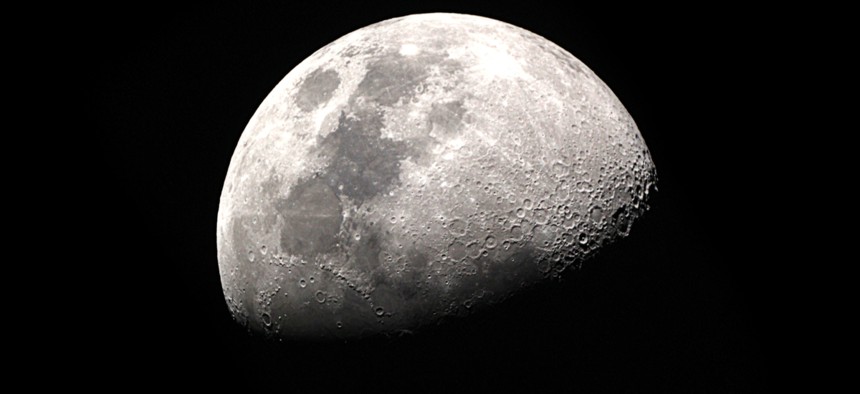NASA Planning New Ways to Show the World Its Future Moon Missions

taffpixture/Shutterstock
The space agency wants virtual reality and other emerging tech to help share its story of lunar exploration.
People can’t yet pack their bags and just go to the moon, but America’s space agency aims to offer next-level, virtual spaceflight experiences to audiences worldwide during its forthcoming Artemis missions—and it’s looking to link with partners that can “visually bring the public along for the ride.”
In an announcement for proposals released Thursday, NASA voiced its intent to link up with outside entities that can advance and accelerate its use of innovative technologies like virtual reality, as well as novel approaches and imagery applications to excite people across the planet and inspire a new generation of explorers, during its planned missions that are set to unfold in the very near future.
“We want to capture the awe of Apollo for a new generation—the Artemis Generation,” NASA Administrator Jim Bridenstine said in a statement. “Just as people were glued to the TV 50 years ago as astronauts took the first steps on the Moon, we want to bring people along in this new era of exploration.”
Collectively deemed “Artemis,” NASA’s latest, weighty effort will incorporate three missions—Artemis I, II and III—in hopes to establish a sustainable presence on the moon, which would underpin its ultimate goal to send humans to Mars.
The first mission is slated for next year and will mark the first flight of the Orion capsule aboard NASA’s Space Launch System rocket on an uncrewed mission to orbit the Moon and return. The agency will make a return journey by humans around the moon and back for Artemis II, which is planned for 2023—and in 2024, Artemis III will deliver the first woman and the next man to the lunar surface.
Lately, NASA has been making a range of moves to inspire the masses with innovative space content and media. News recently surfaced that the agency teamed up with SpaceX to make a movie starring Tom Cruise in actual space, and NASA TV is constantly streaming live and previously recorded content.
But according to Bridenstine, the agency wants partners that can harness technologies “that will go beyond [its] standard coverage on NASA TV.”
While spacecraft are generally equipped with cameras for operational support that is then also used in mission coverage on NASA’s channel, the work in this light will focus on tech and hardware that could fly on the mission and essentially augment imagery the agency produces.
The request notes that the agency has sights set on solutions “with which the public can experience different segments of the Artemis II mission: ‘riding along’ with the crew in Orion on their journey to the area around the Moon; visual exploration of the lunar surface; and on the return to Earth.”
Offering up examples, the agency said it potentially wants “unique hardware,” including 360 degree field-of-view camera systems, virtual reality tools, novel storytelling and distribution methods, 4K/Ultra HD camera systems, robotic “third-person” views, small portable cameras, “and any other concepts that either technically provide more innovative imagery, or [deliver] to viewers a uniquely-engaging spaceflight experience in the most conducive manner.”
Broadcasters, studios, the aerospace industry, academic institutions, nonprofits, and others are listed as potential partners in the work, though the 33-page announcement notes that bilateral collaboration with China, Iran, North Korea, Sudan and Syria or any company or entity owned by those nations will not be accepted for the projects.
Submissions are due December 11.






